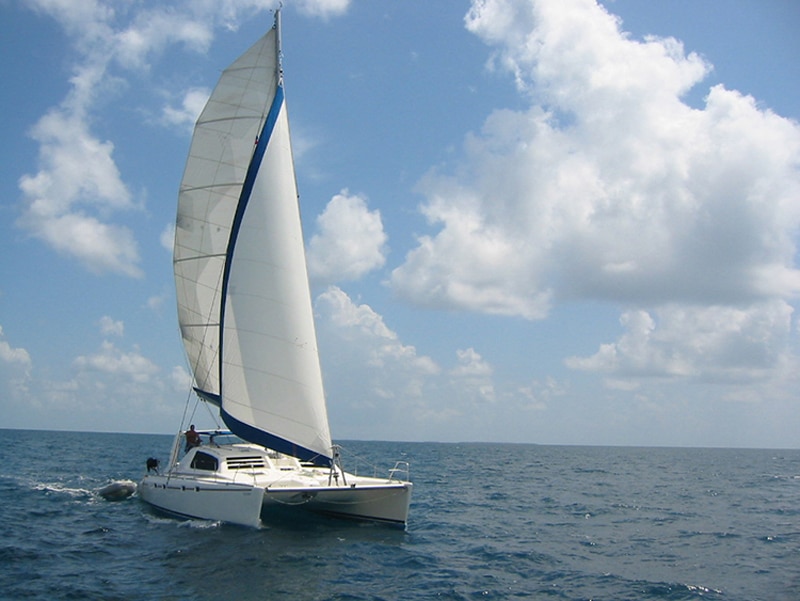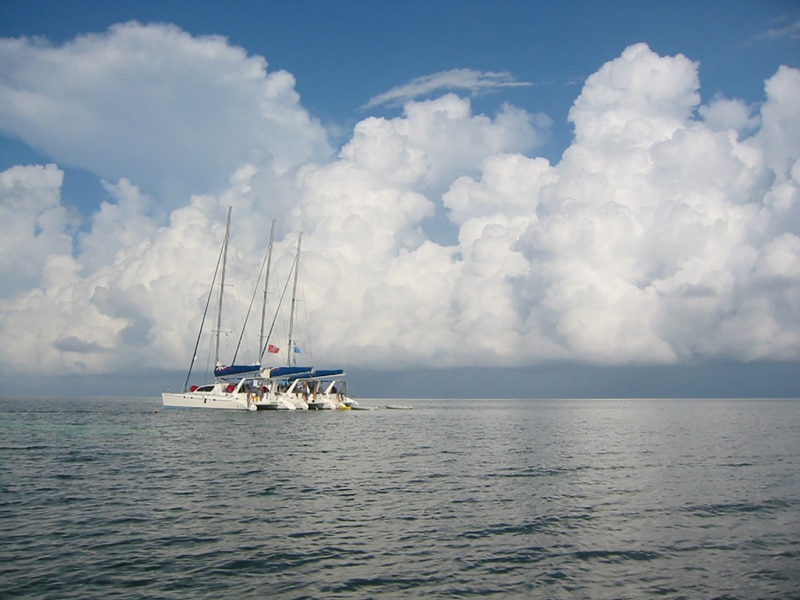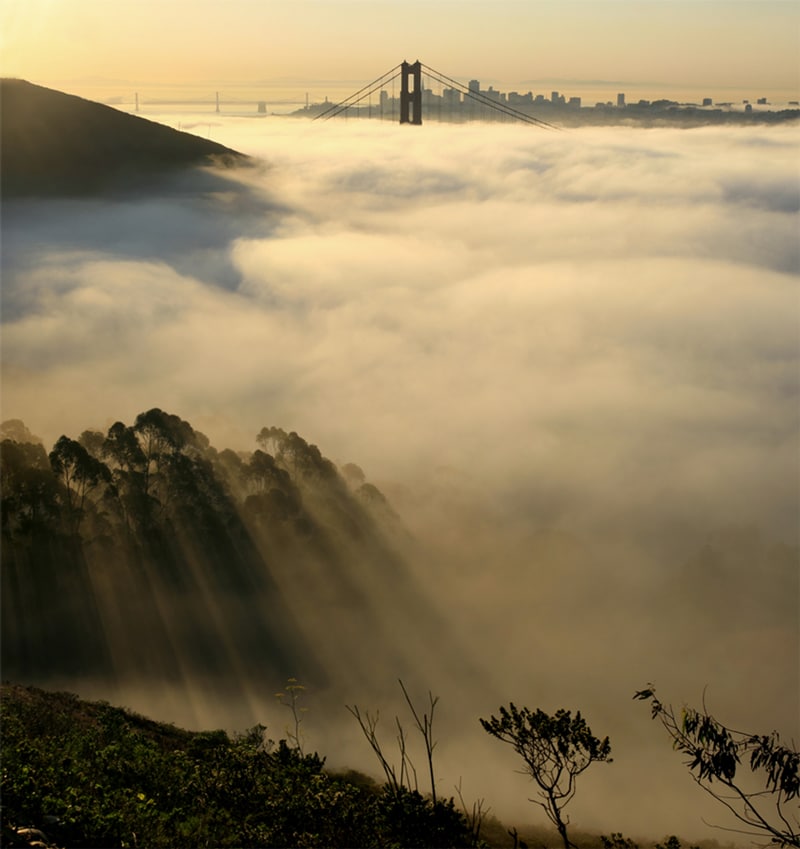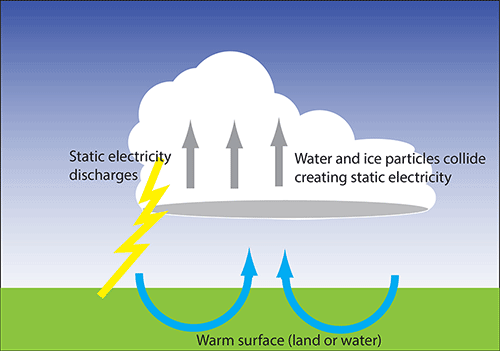Clouds, Fog, Thunderstorms
Clouds
Clouds can give a relatively easy and quick look at what might be coming in the future. Compare these to the two cross-sections of warm and cold fronts presented earlier. Notice that both warm and cold fronts are preceded by cirrus clouds. These clouds then are a good indication of possible changing weather in the next few days.
But because there is so much going on in the atmosphere, any serious prediction of weather from cloud observations is difficult unless you are a complete expert. Given that most of us are not expert meteorologists, it is better to heed the information on your smartphone.
Below are the most common clouds.
Cirrus Clouds: very high and wispy. Possible warm or cold front approaching.
Cumulus Clouds: cotton ball shape. Fair weather clouds. Not too much happening.
Altocumulus Clouds – very high small and cotton ball shape.
Stratus Clouds– low thick clouds. These are typically rain clouds and are associated with warm fronts and low-pressure systems.
Cumulonimbus Clouds– tall puffy clouds often associated with severe thunderstorms. Watch out for these.
Fog
Since fog is one of the more menacing weather conditions because of the risk of collision, it is prudent to know there’s a possibility before leaving the slip or anchorage. Fog banks can often be observed as they move into an area. Whenever fog occurs, the vessel must have a plan of action. These include:
- Knowing and making the proper sound signals
- Posting crew to maintain a lookout
- Using radar and AIS if available
- Proceeding slowly
- Using your VHF to contact other vessels and inquire about conditions around you
Fog Enveloping the Golden Gate Bridge
Fog occurs when the air becomes saturated with moisture by a changing temperature and/or air pressure condition. Fog might occur as a relatively local event, often near shore as it rolls off the land, or it might be much larger, covering a huge area. Over land, radiation fog occurs when the land cools and subsequently, the air next to it cools and moisture drops out, forming fog. Remember that colder air holds less moisture.
Advection fog over the water can be generated by warm, moist air blowing over a cold sea just like your breath on a cold morning. And unlike land-based morning fog, advection fog doesn’t necessarily mean it will burn off as the day warms up.
The many conditions that could lead to fog formation make it prudent for sailors to know what these are for their local area. However, professional forecasting is now very good and should be monitored.
Electric Thunderstorms
Electric storms are frightening. On inland waters, they can arrive very quickly, especially on a hot sultry day. Electric storms are frequently accompanied by high and very erratic winds. Huge wind bullets, which are sudden wind gusts, can come seemingly out of nowhere.
Such storms are produced from fast-rising damp air which cools as it rises. Static electricity is generated by the collision of particles. When the voltage of the static electricity is high enough to discharge to its nearest opposite charge – CRACK it goes. Hope that you are not in your way!
Static Electricity Generated
While you should always be prepared for a storm, when you observe a heavy cloud formation rising rapidly with huge white clouds called “thunderheads,” it is time to make further preparations. Get to a safe harbor if time permits. If not, prepare for a storm: reef the mainsail, lower the jib sail, douse spinnakers, close hatches, keep away from metal objects if possible, put on life jackets, and turn off electronic gear. Crew safety is paramount.
If a violent thunderstorm is approaching take all sails down and turn on engines. Reduce the apparent wind velocity on your boat by running downwind.
View this awesome microburst video which shows a thunderstorm producing deadly winds.
Weather Microburst
If you sail in a thunderstorm-prone area, you should consider seeking professional help to install lightning protection gear for your vessel.
Lightning can strike anywhere, on lakes or on the open ocean. Lightning rods on top of masts and connected to metallic pathways to the ocean can help prevent damage to a sailboat.
When encountering an electric storm, it’s best to leave the area and get off the water. If this is not possible, get everyone below the decks. Do not touch metal objects. While theoretically your mast is insulated from the water in most vessels, at the voltage levels generated in lightning the electrical discharge can jump across the insulating materials. Much of this can be avoided by checking the weather before you go out to see if there is storming activity. On the next page, the concept of CAPE is introduced. CAPE is the likelihood of a thunderstorm appearing.
There is an old myth that says to wrap your anchor chain around the mast and put it into the water to allow lightning to travel overboard and not into the boat. This is certainly a myth and every lightning engineer will tell you that lightning will not travel around the right angle turn from the mast to the chain.














